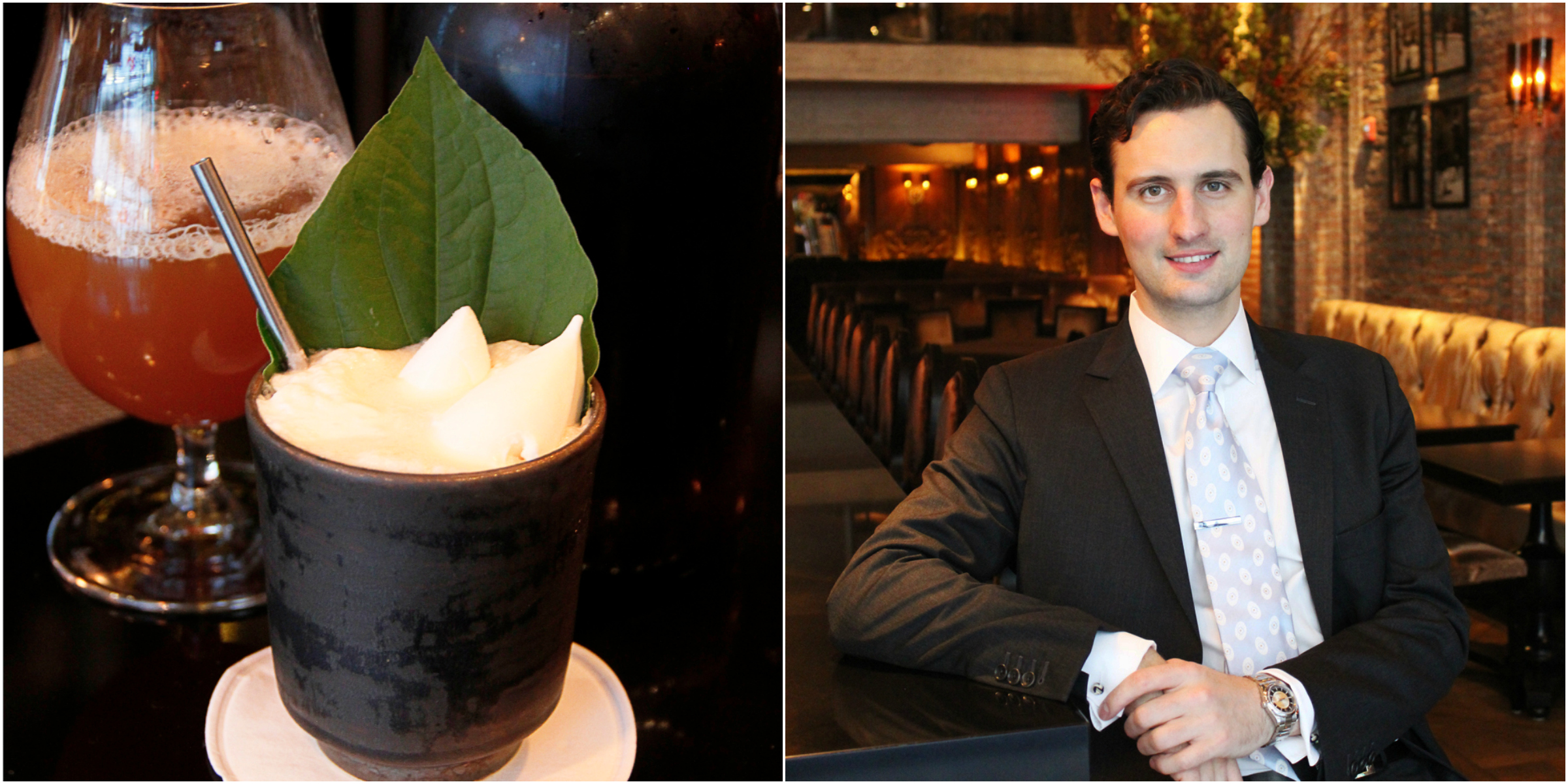Betony's Eamon Rockey Is Fermenting His Own Root Beer

Eamon Rockey is currently serving a homemade fermented (and boozy) root beer float at Betony.
A table at Betony is currently one of New York City's most difficult to snag, as the restaurant recently opened to praise from critics that includes a coveted three-star review in The New York Times. While much has been written about the Modern American cuisine and extensive wine list at the elegant Midtown West venue, its most unique characteristic may be its homemade fermented root beer. Yes, you read that right.
General Manager Eamon Rockey — a former captain at Eleven Madison Park — has been making root beer from scratch as a hobby, but it's now become part of his restaurant's repertoire. His creation is currently offered on Betony's cocktail menu in the form of a float. Eamon describes root beer as "a strong nostalgic presence in American heritage as a soft drink, but [it] actually originated as a serious, frothy brew." And with an ABV of approximately 7%, Eamon's version is serious indeed. We caught up with him to talk about his inspiration, the fermentation process and creative ways to serve it. Oh, and to beg for a reservation.
Why did you decide to make your own root beer?
First and foremost, I'm a huge sucker for root beer. Barq's was my favorite soda growing up and my mom actually kept a little bottle of sassafras extract in our pantry. When I started learning to cook, I wanted to learn how to actually make root beer from scratch, so this is, in effect, a project over 20 years in the making.
What does your version entail?
I work with a forager to procure the sassafras root and birch bark locally. It's a lot of fun finding all of the other aromatics, from whole dried ginger and licorice root to star anise and Tellicherry peppercorns. We simmer these ingredients in stages, then cool the infusion that results. After it is cool, we sweeten it with molasses and demerara sugar, and inoculate it with a beer yeast designed to produce rustic, farmhouse-style saisons. The first fermentation takes place in a large glass jug; once that has finished (about a month), it is poured into smaller bottles with very strong swing-top closures to undergo a second fermentation in bottle (another month). Then it's ready!
What are the challenges?
We encountered two major challenges in this process. The first was trying to gauge the flavor profile of the final product from the initial infusion; so much changes over the course of two months and two fermentations. The second challenge was the carbon dioxide volatility of the final product; if there is too much, bottles literally explode. We've learned to weather this adversity pretty well though.
What does it taste like?
Unlike the root beer we've all grown up drinking, this is a very dry and notably alcoholic beverage. The roots provide a great deal of bitterness and the flavors are very concentrated and intense. It is absolutely delicious served cold, right out of the bottle, but can be a little powerful for some.
What are some potential ways to serve it?
A touch of honey or maple syrup works wonders in taking the edge off of the bitterness for some drinkers, and obviously, a scoop of vanilla ice cream works like a charm. The variety of ways that people may enjoy it is analogous to the preferences of coffee drinkers: some take sugar, some take cream and others take it black.
Is anyone else making their own root beer?
I don't know of a whole lot of people brewing root beer in this fashion. Prior to taking a stab at this, I'd done a good deal of research into the topic and found a number of recipes for similar brews, so there are certainly people thinking along the same lines. I feel blessed to have access to the amazing recourses of Betony's foragers and kitchen to produce this root beer at the highest possible level.
Check out these home brewing stories on Food Republic:

